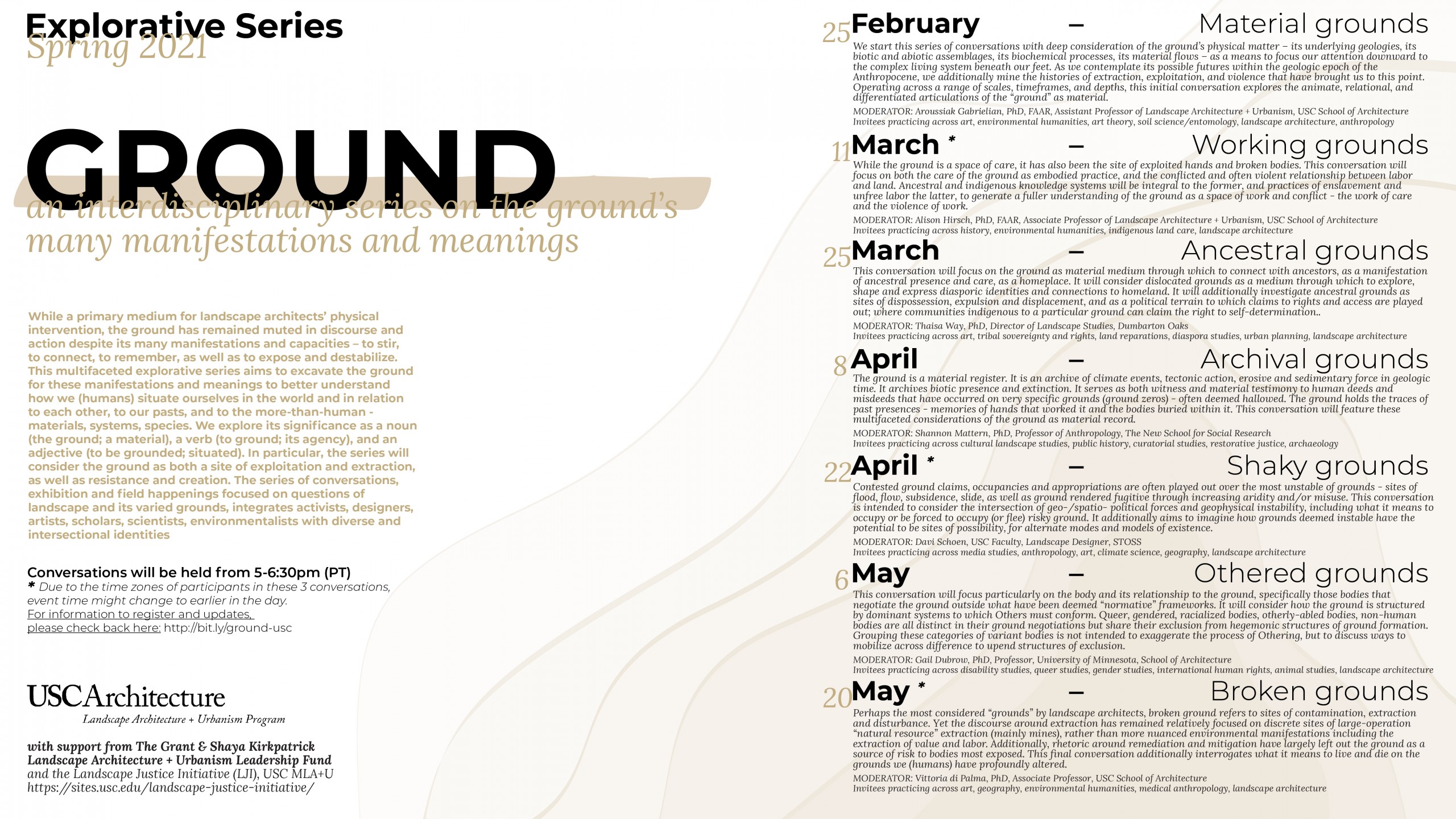an interdisciplinary series on the ground’s many manifestations and meanings
While a primary medium for landscape architects’ physical intervention, the ground has remained muted in discourse and action despite its many manifestations and capacities – to stir, to connect, to remember, as well as to expose and destabilize. This multifaceted explorative series aims to excavate the ground for these manifestations and meanings to better understand how we (humans) situate ourselves in the world and in relation to each other, to our pasts, and to the more-than-human – materials, systems, species. We explore its significance as a noun (the ground; a material), a verb (to ground; its agency), and an adjective (to be grounded; situated). In particular, the series will consider the ground as both a site of exploitation and extraction, as well as resistance and creation. The series of conversations, exhibition and field happenings focused on questions of landscape and its varied grounds, integrates activists, designers, artists, scholars, scientists, environmentalists with diverse and intersectional identities.
Part I – Material Grounds
We start this series of conversations with deep consideration of the ground’s physical matter – its underlying geologies, its biotic and abiotic assemblages, its biochemical processes, its material flows – as a means to focus our attention downward to the complex living system beneath our feet. As we contemplate its possible futures within the geologic epoch of the Anthropocene, we additionally mine the histories of extraction, exploitation, and violence that have brought us to this point. Operating across a range of scales, timeframes, and depths, this initial conversation explores the animate, relational, and differentiated articulations of the “ground” as material.
MODERATOR: Aroussiak Gabrielian, PhD, FAAR, Assistant Professor of Landscape Architecture + Urbanism, USC School of Architecture
Invitees practicing across art, environmental humanities, art theory, soil science, landscape architecture


